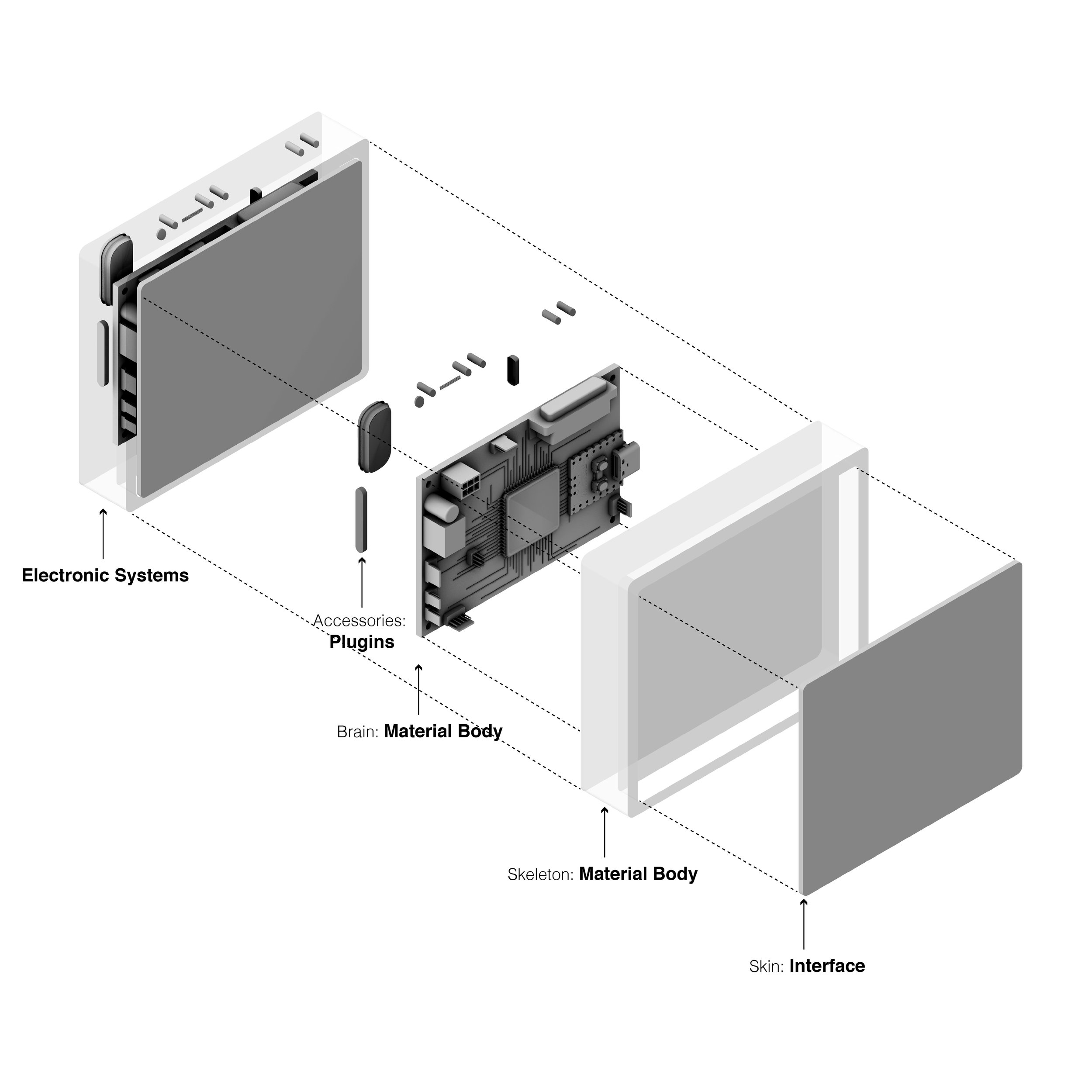Mediated Bytes:
Fungi-in-the-loop for care-based interactions
Let's begin with solar panels. Beyond its technicalities and sustainable endeavors, solar panels invited natural processes (sunlight) in. Other welcoming examples are green roofs and natural / biomaterials. While those examples have a natural component(s) in common, they also portray a singular-sided interaction. They take in processes and phenomena without directly interacting with the source beyond its processing. More tangibly, elements of the natural environments have found their ways into manufactured tools long before. For example, the use of a selection of rocks with known masses as inputs for a justice scales where cast metal weights were not available. The list of examples can go on and on of similar single-sided interactions or the utilization of still material forms for utilitarian and pragmatic use-cases or even aesthetic and atmospheric qualities each raw or processed material holds. While natural materials continue to be processed and reshaped to utilizable forms, we continue to head towards synthetic creations, hardware agnostic experiences, and a higher hierarchy for bytes over atoms (software over hardware).
How can new forms of digital or electronic interactions enhance a sense of compassion with natural ecologies and organisms?
How can we adjust the speed of electronic systems to match closely a natural behavior?
Does our systems have to be “alive” for them to behave in such ways?
Electronic consumer goods are becoming more efficient, smaller, and perform at speeds that keep us engaged, sometimes too engaged. This raises the speculation if devices that run our lives could have our natural speeds. Maybe then we are able to take a pause, a rest, or time for a deeper breath.
The first is the visual, where growth and decay behaviors are used as the underlying processes for immersive media. This is rather an inspiration than a technical alteration. The second is where biomaterials are grown, processed, and then shaped into tangible forms such as the device skeleton or outer body. Third, is a where new devices or systems created from biological organisms are attached as ‘add ons’ to existing devices, either for additional performance, or added pragmatics. Fourth is a closer look into how conductive fungi could find its way into embedded systems to take on lower level contributions. Last, when proximity is not possible, one can use data from external sources or farms as scalar inputs to actuators on devices.
Genelogy of Bio-Interventions
Care-based Embedded Slime Systems
First care-based interaction is a pragmatic one. Where conductive slime is incorporated as part of a circuit, a data line, a power line, or a ground plane. This utilitarian introduction will enable users to interact with their devices to maintain their functionality.
Second, as additional devices that give users new super features upon maintaining a healthy slime growth. In the watch example, the additional feature could be the heartbeat levels or summary of the exercise.
Third, as voltage regulators or potentiometers, where the organic growth of the slime on a grid of capacitive pads will dictate the power input into the system or into an actuator. The values from the sensors are computed and an algorithm is composed to translate this series into the required output.
Learnings from Slime Growth and Decay
Growth & Patterns
Taking Input from Slime Growth on Capacitive Sensor
Displaying Output on a Multiplex LED Board









